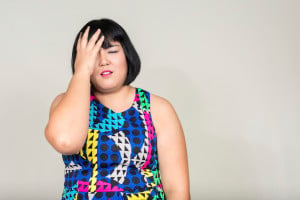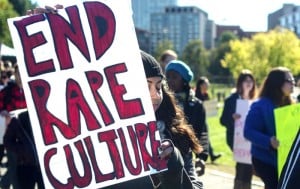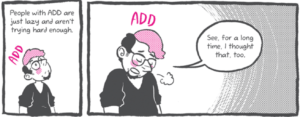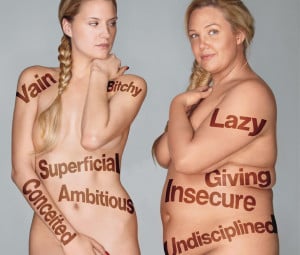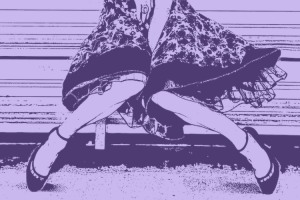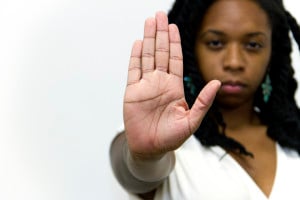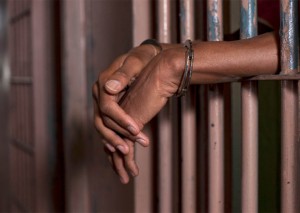
Source: Ed Rants
The US Prison System officially began during the political career of Andrew Jackson.
Although colonial settlers had imported various forms of penal justice from England before then, Jackson’s era saw a more organized and widespread use of imprisonment and rehabilitative labor as the primary penalty for most crimes in nearly all states.
After the Civil War, a number of new mechanisms — such as parole, probation, and indeterminate sentencing — were introduced into the mainstream of American penal practice, but it wasn’t until 1973 that the system became what we now think of as the American Prison System.
Since 1973, the number of incarcerated persons in the United States has increased five-fold. In any given year, seven million Americans are under the supervision or control of correctional services.
Seven million.
And the percentage that come from marginalized communities is shocking. For example, together, African American and Hispanics comprised 58% of all prisoners in 2008, even though African Americans and Hispanics make up approximately one quarter of the US population.
Oppression is built into the fabric of our society. Most of the time, we don’t even notice it’s there. The prison system is an excellent example of this.
On the surface, things seem fair enough: You commit a crime, you go to jail. Simple.
But the system is rigged. If you look closely, you can see the ways that we make it a lot harder for marginalized people to stay out of prison.
Racial profiling is the practice of scrutinizing—and in some cases, directly monitoring—people based on their perceived race. This is not only not illegal nationally (although it is illegal in some states), it’s a thriving practice.
The NYPD only shut down their racial profiling unit this year. Doug Glanville, a retired Major League Baseball player, wrote an article for The Atlantic this spring describing his experience being racially profiled in his own driveway.
If the police are watching you more closely, clearly you are more likely to be arrested. Increased scrutiny leads to increased incarceration.
The War on Drugs is a campaign begun by Richard Nixon in 1971. Since then, most presidential administrations have continued this campaign by leveling heavy penalties against anyone involved in the drug trade.
This campaign has been roundly criticized as racist and has the unfortunate effect of sending huge numbers of people to prison for offenses as minor as possessing a small amount of marijuana. Seventy two percent of people in federal prisons were incarcerated for a nonviolent or drug offense.
People from marginalized communities are much more likely to be involved in the drug trade: The drug trade continues to be an attainable income generator for low education men and women. It can be nearly impossible to avoid being involved with the buying and selling of drugs if you live in a poor neighborhood that relies on the drug trade as its economy.
Factor in racial profiling and the stereotypes that economically disadvantaged people and people of color are more likely to be drug users (news flash: they aren’t), and you’ll see why we have a police force that looks harder in some places than others.
It’s no wonder more people of color end up in our prison systems. And the numbers are seriously horrifying.
1. Black and Latino men are incarcerated at rates wildly exceeding the rates for white men.
One in every 15 African-American men and 1 in every 36 Latino men are incarcerated in comparison to 1 in every 106 white men.
Although people of color make up about 30% of the United States’ population, they account for 60% of the prison population.
2. Youth of color are much more likely to face harsh penalties at school.
70% of youth involved in school-related arrests or referrals to law enforcement are black or Latin@, and some schools pour their resources into more police officers rather than more support staff for their students.
In the South Bronx, there are more than 5,100 police personnel in schools, compared to approximately 3,000 guidance counselors and 1,500 social workers.
3. Women are being incarcerated at higher rates, especially women of color.
Although women are still incarcerated at lower rates than men, the percentage of women incarcerated has increased 800% over the last three decades, and women of color are disproportionally represented.
African-American women are three times more likely than white women to be incarcerated. Latinas are 69% more likely than white women to be incarcerated.
4. Trans people, especially trans women, face extremely high rates of violence in prison.
Currently, trans people are housed in prisons based on their genitals. Therefore, trans people who have not had genital-altering surgery (which is most trans people, since gender confirmation surgery is very expensive) are housed in the wrong prison.
This is especially problematic for trans women, who are 13 times more likely than cisgender women to be sexually assaulted while incarcerated.
5. Felons are denied the right to vote in every state, and are ineligible for many jobs.
Even those offenders who are released from prison and are able to avoid re-offending have a tough time for the rest of their lives.
American citizens convicted of a felony are ineligible to vote, depriving them of political power. An estimated 5.8 million Americans are denied the right to vote based on a past felony conviction. As a result, 1 in 13 African Americans are denied the right to vote.
If you have a felony (or even a misdemeanor, in some cases) on your record it can be nearly impossible to find a job. This results in such limited options for increasing socio-economic status that former convicts continue to break the law because legal employment is impossible to come by.
Many people believe that breaking the legal code of the United States should result in incarceration. Some believe that law-breakers should be rehabilitated or be made answerable to their communities, not the federal government.
Regardless of whether we want to reform the legal code or abolish it, or how we choose to handle people who break the law, we must continue to treat them like people. That means we cannot continue to lock them up and throw away the key, or deprive them of meaningful human relationships.
We cannot continue to use the legal system to dehumanize people who commit crimes.
***
Currently, the American justice system responds to most serious crimes by assigning law-breakers prison time. Although there is a small movement to address societal wrongs through alternative means, such as transformative justice and community accountability, overwhelmingly, breaking the law (and getting caught) will result in imprisonment.
This knee-jerk reaction to crime must stop. Imprisonment disproportionally effects marginalized people. We are perpetuating an unequal society by targeting, imprisoning, and then mistreating people who were already dealt a difficult hand by society.
So what can you do about our broken prison system? Educating yourself is the first step. For more reading, check out these articles on the conditions in prison, including the horror of solitary confinement, the lack of good health care, statistics on prison and families, and endemic prison rape:
- The Unbelievable Inhumanity of Solitary Confinement – And Punishment for as Little as Reading a Book
- Many in US Prisons Lack Good Health Care
- Prison Marriage: Can a Marriage Survive a Prison Sentence?
- Combating rape in prisons
After you’ve familiarized yourself with the problems in the prison system, or if you already know how bad things are in it, check out the good work the ACLU is doing on prison reform, as well as the work of The Sentencing Project, and Penal Reform International. You can support their work by volunteering or donating.
If you’d like to be involved on a more human level, there are many organizations, including the DC Books to Prison Project and Write a Prisoner, working to directly connect you with inmates by sending them books or letters. I corresponded for several years with a man named Phillip while I was in college, and it was a pleasant experience for both of us.
One of the best grassroots ways to combat the injustice in the prison system is to support causes that extend economic and social relief to impoverished communities. Violence is often linked to poverty, and eradicating poverty frequently contributes to bringing crime rates down.
If you’re interested in more radical work, Philly Stands Up! and the Bay Area Transformative Justice Collective are doing good work. For more information on community accountability, the British Columbia Ministry of Public Safety and Solicitor General have an excellent brochure.
Prison reform is possible, and you can help make it happen.
[do_widget id=”text-101″]
Wiley Reading is a Contributing Writer at Everyday Feminism. Wiley is a New Jersey-born artist, writer, environmentalist, and social justice advocate currently located in Washington, DC. They’re a certified Weed Warrior with the Rock Creek Conservancy, a Clinic Escort with Planned Parenthood, a Behavioral Training and Socialization volunteer with the Washington Humane Society, and writes for Disrupting Dinner Parties, a small collective feminist blog. In their free time, Wiley makes comics and posts them at Note the Note, loves every show on the Food Network, makes creative (read: pulled from the recycling) toys for their bunnies, and tipsily reminds every Washingtonian in every single DC bar that New Jersey is the best state. Follow them on Twitter @wreadinggo.
Search our 3000+ articles!
Read our articles about:
Our online racial justice training
Used by hundreds of universities, non-profits, and businesses.
Click to learn more





